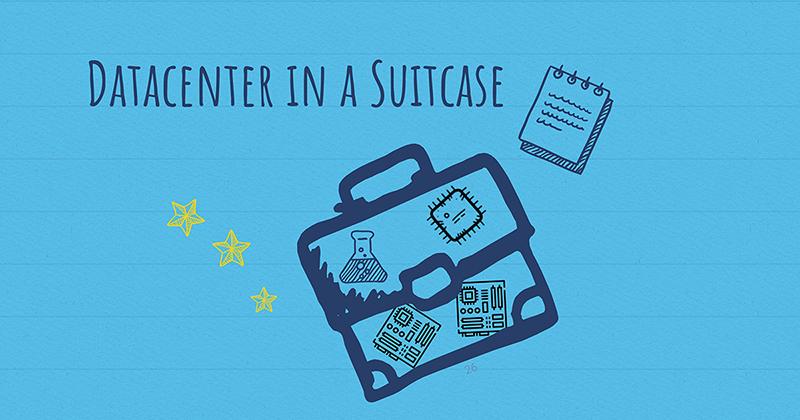Usually when we talk about datacenters, we get the impression it’s going to be big. There are more and more use cases emerging where your datacenter either needs to be portable or is limited in size and power supply. Here we will take a look on how to create a portable datacenter.
The Unusual Cloud-Native Demands
In the cloud-native space, we’re shifting more components into unconventional spots — Edge. This means locations that might have limited energy reserve or are prone to outages or are limited in space.. We need systems that are self-sufficient, energy-efficient, and portable.
Consider the idea: building everything inside a suitcase. We’re talking about leveraging ARM processors, not your typical server processors. These ARM units are powerful and energy-efficient—perfect for a low-energy, highly portable setup.
Why ARM Processors?
ARM processors, short for Advanced RISC Machines, power nearly every smartphone. They operate on Reduced Instruction Set Computing (RISC) architecture, executing instructions predictably and efficiently.
The licensing model for ARM is open, enabling various companies to develop specialized processors for different use cases. With advancements to 64-bit technology, ARM processors become more feasible in the cloud-native realm.
The ARM Advantage
Energy efficiency is a big win with ARM processors. They consume far less energy compared to traditional x86 architectures, making them ideal for portable data centers.
Moreover, ARM processors offer hardware customization, allowing tailored designs for specific needs, enhancing efficiency further. This can also be adopted by hardware vendors due to the flexible licensing.
Challenges and Solutions
However, there are challenges. Compatibility with software not optimized for ARM remains a hurdle. Performance per core might lag compared to x86 processors, and standardization issues persist due to the diversity of ARM options.
The compatibility problem will solve over time as more and more software is getting adopted also on ARM architecture.
The Practical Setup
I recently acquired a mini-ITX board from TuringPi, equipped to house ARM computing modules. Sure, there are other boards, but this one had networking and storage features baked in, making it a convenient choice. Plus, the price was reasonable, around $200.
Building this setup wasn’t without its challenges. From USB compatibility issues to missing packages on Ubuntu, each step required troubleshooting and adaptation.
Virtualization: The Missing Link
Virtualization plays a crucial role in this setup. While containers run most software, there are cases where VMs are necessary, especially for non-containerized applications. Virtualization provides a layer of control and safety, ensuring system stability.
With the help of KubeVirt we can leverage the OpenSource way to virtualize our ARM based hardware nodes to create VM’s to give the possibility of facilitating a smoother transition to a complete ARM infrastructure.
Future Steps and Use Cases
Moving forward, the plan is to explore multi cluster deployment, optimize power sources with solar energy, and upgrade hardware for better performance. Also, an automated installation with the help of PXEBoot and Tinkerbell to Set up the whole infrastructure is something to take into consideration to automate and streamline the management of multiple “Datacenters”
The last question to be answered would be what is the use-case? As already mentioned, we are here focusing on Edge scenarios. Here the possibilities are also quite diverse. Beginning with just a small cluster that needs to run inside a store or a small part of a manufacturing line and shop floor to some true remote cases.
Some of those could range from expedition teams that need on site compute power to work at the location on research up to military use cases too. Those could be having a portable Intel capable station, that can be carried by a single soldier and adapt to location changes, but have the power to support with intel gathering, data analysis and general compute power.
Conclusion: A Work in Progress
This unconventional approach is still a work in progress. While it’s not production-ready yet, it’s an intriguing concept with promising potential for specific environments and scenarios.
And that’s the gist! While it might sound like a crazy idea at first, the notion of a suitcase-sized data center opens doors to exciting possibilities in the cloud-native landscape.

